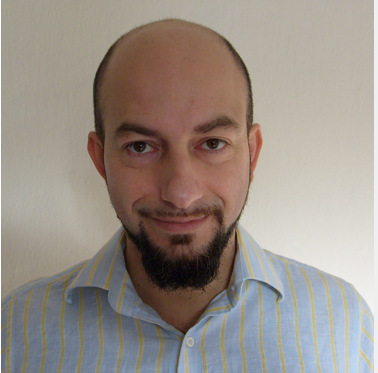Science fiction inspiring science fact? Stranger things have happened.

Dr Mauro Dragone leads a European team of robotics experts in the quest for organic robotic intelligence. We may never worry about doing domestic duties again. By John Holden.
There is a Simpsons Halloween episode where the family get a new robotic home that automatically does all domestic duties and chores in the home. Marge chooses the voice of Irish actor Pearse Brosnan for the robot’s human response system. Then the house falls in love with Marge and tries to kill Homer.
Well this could be the future (all except for the robot falling in love and having murderous tendencies, of course). No, it wasn’t the Simpsons that inspired new research at the UCD Clarity centre. But it was another bit of popular culture. “I initially got the idea from watching the movie, Avatar,” explains Dr Mauro Dragone, co-principal investigator, project manager and team leader at the CLARITY Centre for SensorWeb Technologies in Ireland at UCD. “The blue creatures connect their heads to the roots of trees in their planet as a way to share knowledge, connecting their brains with the overall brain of the planet. This way they can learn new things. I had the idea of basically doing something like this with robots.”
The UCD Clarity centre is at the cutting edge of web sensor technologies. Their core aim is to ‘bring information to life.’ With this project, known as RUBICON, they’re hoping to bring such information right into the home by creating intelligent robotic networks that could be used in a domestic setting. Imagine a house with a central brain system that all the household appliances are connected to.
“A system would have ‘synapses’ mimicking the biological brain by travelling across wireless connections and enter into radio contact with other participants, allowing them to share knowledge and help each other to learn more efficiently in their environment,” says Dragone. “And if a robotic appliance acquires some knowledge when it’s working and then it leaves that environment, the information is not lost. Equally if a new robot joins they can learn existing information from the central brain.”
The applications for this technology are very suited to the home. If your home system knows you like the vacuuming done when at work, the alarm system and hoover can share information and make sure it’s done between 9 and 5. “What we want to create is a system that will learn how to help the human without the human having to instruct the system,” says Dragone. “So if a user wants to take a bath at a certain time, say before they go to work in the morning, things will happen automatically without the user having to instruct the system.
“We know that in the future things will be more automated. We already have lots of automatic appliances in our homes and businesses but they don’t cooperate in an organic fashion. Achieving this will be difficult though. We want this technology to be available as soon as possible by integrating cheaper robots.”
This will be the biggest challenge for the team. Making it work in a laboratory setting is one thing. But unless it can be applied in a commercial, industrial setting, it won’t be of any use. “Besides university involvement we have two small and medium enterprises (SMEs) involved. One is called Robotnik, a Spanish SME that specialise in robotic transport application,” says Dragone. “With them we hope to overcome the big obstacle in deploying this kind of system. They may work in the lab but once you want to move the system to a real world environment, there is always a bunch of new problems to deal with. But this is at the core of what we want to tackle at Rubicon.”
For more info go to: http://fp7rubicon.eu/
